The difference between brushless motor and brush motor
作者:長沙奇沃電機來源:本站閱讀次數(shù):【關(guān)閉本頁】
2021-01-21 14:14
In many people's eyes, brushless motor and brushed motor may not be clear about the difference between them. In fact, they are roughly the same in some places, but not exactly the same. There are a small part of the details that are different. What's the difference between them?
In terms of working principle:
Brushless motor adopts electronic commutation, the coil does not move and the magnetic pole rotates. Brushless motor, is the use of a set of electronic equipment, through the hall element, sense the position of the permanent magnet pole, according to this perception, using electronic circuits, timely switch the direction of current in the coil, to ensure the correct direction of magnetic force, to drive the motor. The disadvantages of brush motor are eliminated.
These circuits are motor controllers. The controller of brushless motor can also realize some functions that can not be realized by the brush motor, such as adjusting the power switch angle, braking the motor, reversing the motor, locking the motor, and stopping the power supply to the motor by using the braking signal. Now the electronic alarm lock of battery car makes full use of these functions.
Brushless DC motor is a typical mechatronics product, which is composed of motor body and driver. Because the brushless DC motor is operated by self-control, it will not add another starting winding on the rotor like the synchronous motor with heavy load starting under variable frequency speed regulation, and it will not produce oscillation and out of step when the load changes suddenly.
The brush motor adopts mechanical commutation, the magnetic pole does not move, and the coil rotates. When the motor works, the coil and the commutator rotate, but the magnet and the carbon brush do not rotate. The alternating change of the coil current direction is completed with the motor's rotating commutator and brush.
In the brush motor, this process is to arrange the two power input ends of each group of coils into a ring in turn, and separate them with insulating materials to form a cylinder like thing, which is connected with the motor shaft as a whole. Under the action of spring pressure, the power supply is pressed on the coil from two specific fixed positions through a small column (carbon brush) made of two carbon elements Enter two points on the circular cylinder to energize a group of coils.
As the motor rotates, different coils or different poles of the same coil are electrified at different times, so that there is a suitable angle difference between the N-S pole of the magnetic field generated by the coil and the N-S pole of the nearest permanent magnet stator. The opposite magnetic field attracts and the same magnetic field repels each other, which generates force and drives the motor to rotate. The carbon electrode slides on the coil connector like a brush on the surface of an object, so it is called a carbon "brush".
Sliding with each other will rub the carbon brush and cause loss, so the carbon brush needs to be replaced regularly; the carbon brush and the coil connector are alternately on and off, which will cause electric spark, electromagnetic damage and interference to electronic equipment.
In fact, there are some differences between the two kinds of motors in speed regulation. The control of the two kinds of motors is voltage regulation. Only because the brushless DC adopts electronic commutation, it can be realized by digital control. The brush DC Motor is commutation by carbon brush, and can be controlled by traditional analog circuits such as silicon controlled rectifier, which is relatively simple.




